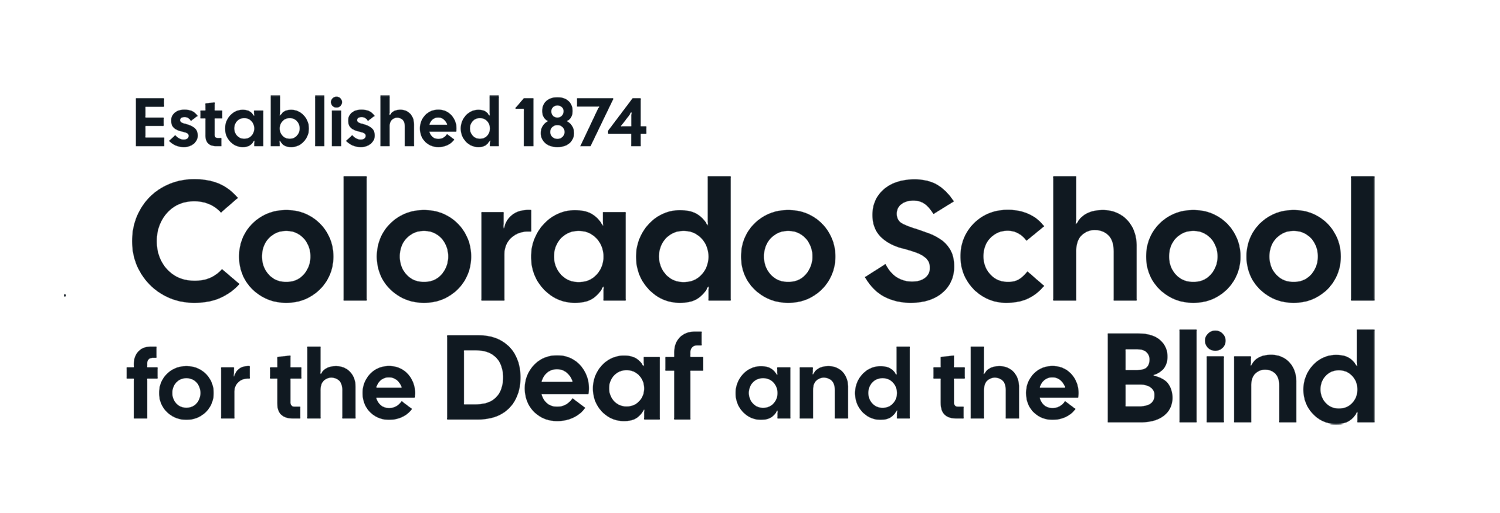Commitment Statement and Aspiration Statement
Commitment
CSDB is a Deaf, Blind, and Deafblind-led academy where language, learning, and leadership converge to generate agency. Grounded in lived experience, students develop presence, purpose, and wayfinding - in a space built for growth, pride, and authenticity.
Aspiration
CSDB builds generations of Blind, Deaf, and Deafblind thinkers, makers, and leaders who set new standards and transform the world.
Values
Lived Leadership
We are led by those who live the experience. Deaf and Blind leadership is embodied, rooted in lived truth and active decision-making.
Linguistic Power
ASL and Braille are sovereign. Both generate power, presence, and growth.
Relentless Rigor
We raise the bar - and minds - with every step. Challenge builds thinkers. Rigor builds leaders.
Transformative Trust
We lead with emotional intelligence, vulnerability, and shared accountability.
Generative Knowledge
Deaf and Blind ways of knowing spark innovation and shape how we learn. Our classrooms evolve through visual, tactile, and embodied intelligence.
At CSDB, learning is rooted in meaningful experiences that nurture curiosity, independence, and self-confidence. We believe every learner grows through connection, discovery, and active engagement with the world.
The Expanded Core Curriculum (ECC) is woven throughout every aspect of instruction, empowering students with the essential skills for independence, leadership, and lifelong learning.
Instruction is delivered through each learner’s unique learning media—whether tactile, Braille, auditory, or print with optical enhancement—ensuring equitable access and achievement for all.
Daily and intentional Braille instruction and use foster strong literacy foundations that extend beyond the classroom into the community and future pathways.
Through Orientation and Mobility (O&M), students gain the confidence and skills to navigate their environments safely and independently, embodying CSDB’s belief in self-determination and empowerment.
The effective and creative use of assistive technology opens new opportunities for students to thrive and compete in a rapidly evolving digital world, reflecting our aspiration to prepare every learner to climb, rise, and lead.
Language is the foundation of learning, connection, and identity. At CSDB, we are committed to a bilingual environment in American Sign Language (ASL) and English) that ensures equitable access, authentic expression, and lifelong empowerment for every learner.
From birth, immersion in a language-rich ASL and English environment fosters linguistic, cognitive, and social growth—building confident communicators and critical thinkers.
All staff who work with Deaf and hard of hearing learners use ASL as the primary language of access and connection, ensuring that every interaction supports full participation and belonging.
Auditory and spoken language services, provided as appropriate to each learner’s strengths and needs, complement our bilingual framework and strengthen communication across modes and settings.
Exploring Deaf culture and heritage helps learners develop pride in their identity and a deep sense of community—reflecting our aspiration to nurture leaders who honor their roots while shaping their own futures.
Every member of the CSDB community contributes to a visual-tactile environment that celebrates language diversity and upholds our shared commitment to accessibility, excellence, and transformation.
CSDB partners with families as the first and most important advocates in a child’s learning journey. Each Individualized Family Service Plan (IFSP) honors and supports families’ informed choices regarding their child’s language, communication, and technology—reflecting our commitment to respect, access, and empowerment.
Learners’ communication needs guide every Communication Plan, ensuring that supports and services are intentional, individualized, and aligned with each child’s strengths and goals.
Statewide access to ASL instruction and mentorship from qualified Deaf professionals strengthens connections among families, educators, and communities—promoting language equity and cultural understanding across Colorado.
For learners who are blind or visually impaired, tailored accommodations, access to the Expanded Core Curriculum (ECC), and appropriate technology build confidence and independence in school and beyond.
From birth to age two, families receive early support in concept development, experiential learning, and ECC foundations to nurture growth from the very beginning.
Through the Colorado Instructional Materials Center, CSDB ensures timely access to Braille and large-print materials so that every student across the state can learn on equal footing and rise to their full potential.
